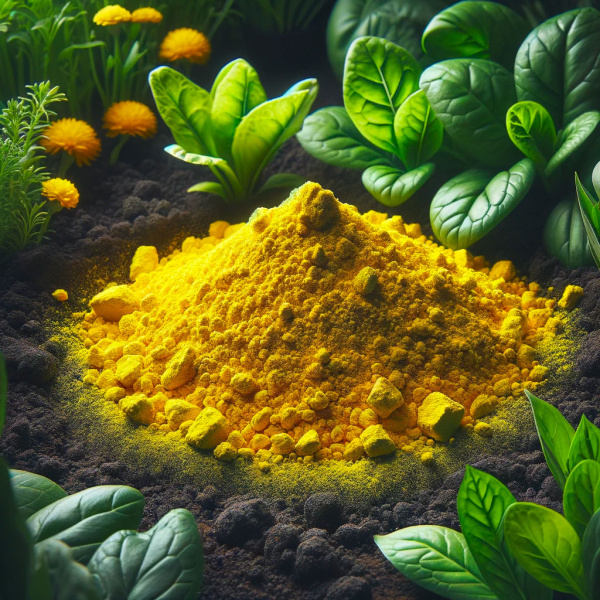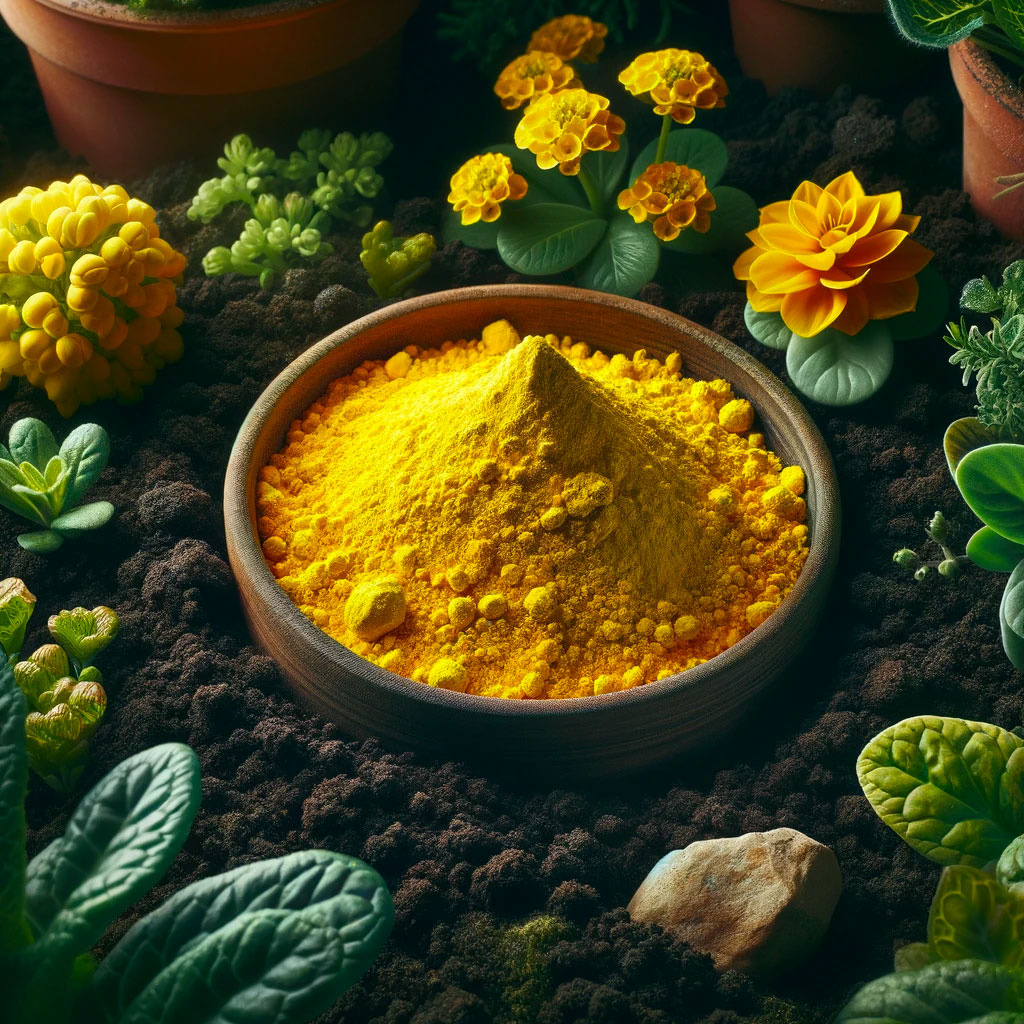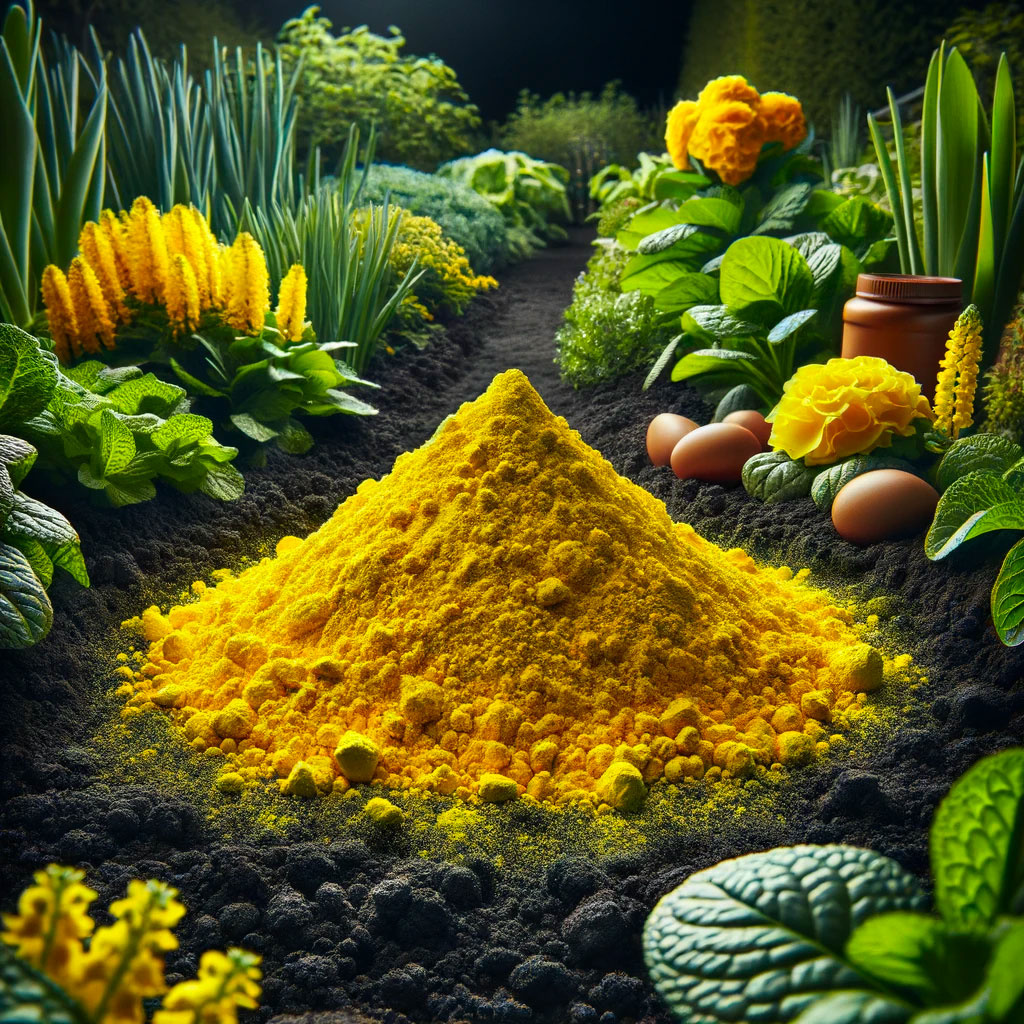
Sulfur Introduction
Sulfur, an often-overlooked but essential nutrient for plant growth, serves a dual purpose in the garden: it provides plants with necessary nutrition and can lower soil pH in alkaline conditions.
This natural element is crucial for protein synthesis, enzyme function, and chlorophyll production. Utilizing sulfur as a soil amendment can significantly enhance plant vitality and soil quality.
This guide will detail the benefits of sulfur, its role in plant nutrition, optimal application methods, compatibility with different plants and soil types, and its environmental benefits.

Sulfur Key Benefits
Incorporating sulfur into garden soil offers multiple advantages:
- Soil Acidification: Sulfur is effective in lowering the pH of alkaline soils, making it more suitable for acid-loving plants.
- Nutrient Availability: By adjusting soil pH, sulfur can increase the availability of other nutrients, such as iron, manganese, and phosphorus, essential for plant health.
- Disease Prevention: Sulfur has natural fungicidal properties that can help prevent certain soil-borne diseases.
- Plant Growth Support: As a necessary nutrient, sulfur plays a critical role in plant growth, particularly in the formation of amino acids, proteins, and enzymes.

Sulfur Nutritional Profile
Sulfur is a vital macronutrient for plants, involved in various metabolic processes, including photosynthesis and the synthesis of amino acids and vitamins.
It contributes to vigorous plant growth, increases enzyme activities, and improves seed production.
Sulfur's role in chlorophyll formation is also essential for photosynthesis, impacting plant energy and overall health.

How to Use Sulfur
Effectively using sulfur in the garden depends on the specific needs of your soil and plants:
- Lowering Soil pH: Apply elemental sulfur to the soil at a rate recommended by a soil test, typically 1-2 pounds per 100 square feet, to gradually decrease pH levels.
- As a Plant Nutrient: Mix sulfur into the soil or use a foliar spray for plants showing signs of sulfur deficiency, characterized by yellowing leaves.
- Pre-Planting Treatment: For acid-loving plants, incorporate sulfur into the planting area well in advance of planting to allow time for the pH to adjust.

Ideal Plants and Soil Types
Sulfur is particularly beneficial for acid-loving plants such as blueberries, rhododendrons, azaleas, and potatoes, which thrive in lower pH soils.
It's most effective in alkaline soils where lowering the pH is necessary to meet the nutritional needs of these plants.
Sulfur can be used in various soil types but requires adequate moisture for microbial activity to convert it into sulfuric acid, which then lowers the soil pH.

Sustainability and Environmental Impact
Using sulfur as a soil amendment promotes sustainable gardening practices by naturally adjusting soil pH and providing essential nutrients without synthetic chemicals.
Its use can enhance soil health and plant resilience, reducing the need for chemical interventions.
Additionally, sulfur's role in disease prevention can lead to healthier gardens with less reliance on fungicides, contributing to a more eco-friendly gardening approach.

Sulfur Tips and Tricks
To maximize the benefits of sulfur in your garden, consider these tips:
- Conduct a Soil Test: Before applying sulfur, test your soil's pH to determine the exact amount needed to achieve the desired acidity.
- Apply Gradually: Soil pH changes slowly. Apply sulfur incrementally and retest soil pH after a few months to avoid over-acidification.
- Water Well: After applying sulfur, water the area thoroughly to help incorporate the sulfur into the soil and activate the acidification process.

Sulfur Conclusion
Sulfur is a powerful tool for gardeners looking to optimize plant health and soil conditions. By understanding how to apply sulfur correctly, you can support vibrant plant growth, improve nutrient availability, and maintain healthy soil pH levels.
We encourage you to visit our shop and explore the use of sulfur in your garden and share your experiences, fostering a community of gardeners committed to natural and sustainable gardening practices.
Together, we can create flourishing gardens that are both productive and environmentally responsible.


